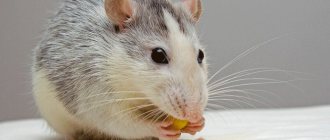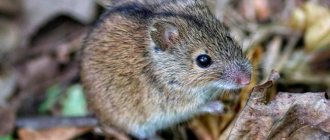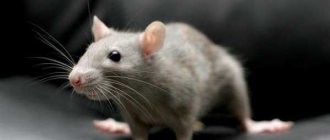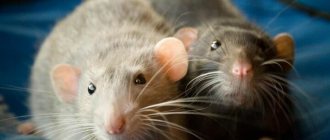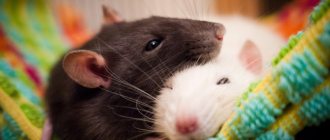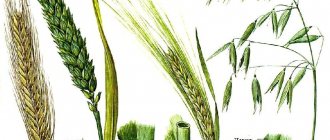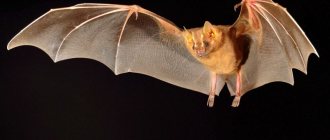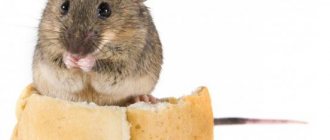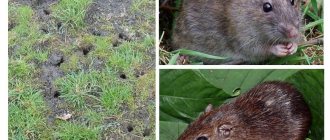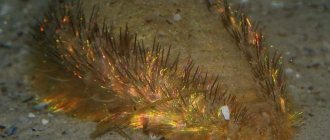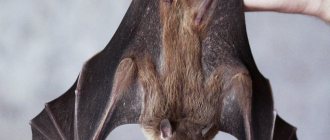THE SMALLEST MOUSE
The little mouse is the smallest rodent in the world, and together with the pygmy shrew and the tiny shrew, it is the smallest mammal on the planet. The body length of this mouse is only 11-13 cm, and almost half of it is a long tail. The weight of an adult male is no more than 16 g, a newborn mouse is slightly less than 1 g. The flat muzzle with short ears, together with the bright reddish fur of the back and sides of the body, distinguishes the baby mouse well from other small rodents.
Along river valleys, this species penetrates far to the north - to the Polar Urals and Yakutia, and in the Central Caucasus it lives in alpine and subalpine meadows at an altitude of up to 2200 m. The little mouse lives primarily in wet meadows near rivers, along the edges of forests, and sometimes settles in fields, rice paddies and hayfields. It is extremely difficult to see and observe her. And the point is not only in its small size, but also in the amazing ability of this animal to hide and hide its presence. More often, a baby mouse is seen by chance, having scared it away from the nest, or in winter, when the animals gather in groups.
Benefit
For many years, house mice have been bred as laboratory specimens. One of the reasons for the mass breeding of rodents in captivity is various experiments. Decoding the genome of house mice was completed in 2002. Scientists have found that the gene is 80% identical to the human gene. The effect of new drugs is being tested on animals.
Breeders are constantly experimenting, breeding pets with original colors - red, yellow, blue, white, spotted. This cute little creature pleases the eyes of its owners and is not at all like the harmful, dangerous gray creature.
Interesting!
In the course of numerous experiments, a “dancing mouse” was obtained. Pathology in the functioning of the brain, a disorder of the motor system has led to the fact that the animals are spinning non-stop, being in one place, moving in zigzags. Singing mice were developed in China about 350 years ago. Rodents make sounds similar to crickets.
The animals are bred specifically in nurseries to be fed to other animals - snakes, lizards, hedgehogs, cats, and other predators.
The house mouse is one of the most unique, interesting, unusual creatures. There is no point in purposefully destroying animals, unless they happen to be near the house or live in an apartment.
Description of the field mouse:
- Body length no more than 12 cm, excluding tail. The thin tail makes up 70% of the body length.
- The body is oblong. The hind feet are elongated and protrude forward when running.
- Long muzzle, small round ears, oblong nose.
The fur is hard, rough, short. The colors can be different - gray, brown, ocher or beige. A straight line of black or brown shade runs along the spine. The color of the abdomen is snow-white. At the base the hairline has a dark tint. Small spots may be present on the chest.
The vole mouse has unique teeth; a pair of long incisors on the lower jaw grow throughout its life. To prevent their excessive growth, and they grow at a rate of 1-2 mm per day, the mouse is forced to continuously grind them off against hard objects.
As for weight, the average animal does not weigh more than 20 grams.
>Photo
NEST ON STILTS
In summer, the baby mouse builds a spherical nest from blades of grass, slightly larger than a tennis ball, securing it between the long stems of plants. As a result, such a ball hangs above the ground at a height of up to 130 cm, although sometimes it can be located on the ground. The outer layer of the nest consists of woven large parts of plants, which are most numerous in the meadow, while the inner lining consists of smaller and softer materials. Such a dwelling is intended primarily for breeding offspring. From May to October, a baby mouse has 2 to 3 litters, consisting of 5-8, or even 12 pups. In England, for example, where climatic conditions are milder, animals breed even in December. At the same time, a separate nest is built for each litter, which helps mice avoid annoying parasites.
The nest does not have a special entrance, and the female, each time she climbs into it, makes the passage again. When leaving the nest, she always closes the hole. In this way, she improves camouflage and reduces the risk that some predator will discover her offspring. At the same time, on the territory of the mouse pair there may be one or more more simply arranged residential ball-houses, which the parents use for relaxation and shelter.
Mice develop very quickly and reach sexual maturity by about 40 days of age, and if conditions are favorable, they themselves have offspring in the same year.
Ways to fight and protect
The main difficulty in the fight against field mice is that they live in places hidden from human eyes. This means that catching or poisoning them is quite problematic. Therefore, the primary task in the fight against voles is the need to find and destroy their housing. You can do this in the following ways.
We drive mice away from the territory
First of all, you need to try to drive rodents out of the area:
- Mow tall grass, remove dry leaves and weeds. You also need to get rid of branches and piles of plant debris. All of these are great places to build burrows.
- Fruits that have fallen from the tree should not be left on the site, as they are an easily accessible source of food.
- Digging up the area can help get rid of holes and underground passages.
- To prevent rodents from damaging fruit trees, a fine mesh net is dug into the ground around the trunks. The same can be done around the perimeter of the entire site.
We use repellers
The use of special repellent devices can speed up the process of expelling voles from your territory. They are installed around the perimeter of the site and provide protection from moisture.
We use mousetraps
Ordinary mousetraps can also help in the fight against mice. Experienced gardeners recommend installing these devices on the site in early spring and late autumn, since it is at this time that mice reproduce most actively. To prevent harm to pets, mouse traps can be covered with a box; this will not stop mice in pursuit of the bait.
We use poisons
At the end of winter and beginning of spring, the use of poisons is very effective. At this time, mice are hungry and not very picky about food. Poisons are placed directly in burrows.
FIGHTING ANIMAL
The baby mouse is active all day, every three hours a short sleep and feeding alternate each other. The animals are very sensitive to overheating and try to avoid direct sunlight, so in summer they are usually nocturnal, while in winter they are more active during the day. To avoid enemies, the little mouse moves slowly and carefully, often freezing behind the stem of a plant. If danger persists, a wary rodent may even plummet downwards, hiding in the shadows on the ground.
The baby mouse feeds on all available seeds and fruits, and in the fall it sometimes makes small reserves of grain, which will come in handy in the coldest weather. After all, animals do not hibernate during the winter. In search of food, they scour under the snow, but not far from their “winter apartment.” This is simply a constructed hole or a ground shelter - among dead wood, under stacks and haystacks. If the winter is very harsh, the animals move into human buildings.
In the cold season, males and females live separately, uniting in pairs only to breed offspring, but in the most favorable places for wintering, for example, in stacks or granaries, they form clusters of up to 5 thousand individuals.
Secluded housing
In most cases, the house mouse settles on soft soil that is not prone to drying out. To make it easier to make moves, the walls of the tunnels did not collapse. They build a hole 100 cm long. There must be an entrance and 2 emergency exits. The nest chamber is built at a distance of 30 cm from the ground surface. In winter they go deeper - up to 65 cm in depth. The diameter of the nest is about 25 cm. House mice prepare a soft bedding from twigs, leaves, moss, and all convenient materials.
House mice often inhabit ready-made burrows of voles, moles, hamsters, and other rodents. Or they build a nest under stones, in natural depressions in the ground, under a mound of leaves.
In human housing, house mice place their nests in well-protected, secluded places. Prefer to settle:
- under the floor;
- between walls;
- in the attic;
- under trash cans;
- in places where food waste accumulates;
- in the vegetable store.
To build a nest, various available, suitable materials are used: straw, pieces of fabric, twigs, hair, feathers, polystyrene foam, polyurethane foam.
Interesting!
In the wild, house mice become more active at night. During the day they hide in holes for several reasons - they do not like bright light, they are afraid of predators. Housing is designed to suit people's lifestyles. They crawl out of the shelter in complete silence.
If there is constant artificial lighting in the house, house mice are active around the clock with regular breaks. There are about 20 periods of wakefulness per day with an average duration of 30 minutes. House mice move along studied routes. They leave behind feces, urine, and food crumbs.
House mice run well and quickly respond to rustling sounds and movement. The animals are capable of reaching speeds of up to 13 km/h. They climb trees and flat surfaces, jump, and behave freely in water.
Each has its own territory. The mouse does not move far from the nest; it hunts in a designated area. Males are entitled to 1200 m², females - 900 m². During the period of strong reproduction, house mice settle in families and colonies. There is a leader - a male, several dominant females.
Interesting!
The head of the family behaves aggressively towards young males; fights for primacy between females rarely occur. They raise their offspring together and take care of proper nutrition. Weak individuals try not to show themselves to the leader and begin to become active when the “leader” falls asleep. Grown-up mice are soon kicked out of the family. They create their own hierarchy.
A SHORT, HAZARDOUS LIFE
In nature, the lifespan of baby mice is very short - up to a maximum of 1.5 years, but usually no more than 6 months. According to European scientists, 95% of all animals in the population die in winter. The main causes of mortality are cold or wet weather, sudden frosts and predators such as weasels, stoats, foxes, cats, owls and crows. Moreover, in captivity, animals can live up to 5 years. Peaks in the baby mouse population usually occur every 3 years, after which there is a gradual decline followed by growth. In nature, populations of this rodent are characterized by an extremely high reproduction rate, but at the same time very low survival rate. The baby mouse in some European countries is classified as a species that requires protection due to the gradual decline in their numbers. As the main threats to this species, researchers note the increasing intensification of agriculture and, as a result, the destruction of potential habitats, as well as the generally poor knowledge of the ecology of this species.
LITTLE MOUSE IN THE FOOD CHAIN
The main food of the baby mouse is the seeds of various herbs, primarily cereals and legumes, tree fruits and grains of cultivated plants. In summer, animals also readily eat small insects such as butterflies, moths and grasshoppers, and their larvae.
NUTRITION OF THE BABY MOUSE
CHINA MEADOW
In the second half of June, in sparse mixed and birch forests, on forest edges and slopes, and in steppe meadows, the herbaceous perennial blooms - meadow chin. On tall, up to 1 m, thin stems, among many small leaves and tendrils, clusters of bright yellow moth flowers light up. Soon they will turn into beans. This plant from the legume family is loved by sheep, horses, and geese. Nina meadow, like many other legumes, is very nutritious: it contains a lot of ascorbic acid, carotene and vitamin P, and microelements. And, despite the bitter taste, the little mouse gladly includes it in its diet.
OATS
The baby mouse's obligatory dish is grains of cultivated cereals. For example, oats. The fruits of this plant are distinguished by the optimal percentage of carbohydrates, proteins, fats and B complex vitamins. Oats contain the protein necessary for the body to grow and repair tissues. Soluble fiber lowers blood cholesterol levels, protecting the cardiovascular system. Vitamins and minerals are involved in important metabolic processes in the body. It is no coincidence that people use oats as a dietary product and include them in the diet of those recovering. The mouse, although it does not know about the chemical composition of the cereal, appreciates it, perhaps, more than a person.
ENEMIES OF LITTLE MICE
LASKA
This smallest representative of mustelids is a formidable enemy for the tiny mouse. Agile and agile, the weasel runs quickly and crawls through the narrowest cracks and holes. This bloodthirsty animal sometimes stores up to 30 voles and mice in reserve! There is no escape for small rodents either on the surface or in the burrow from this predator. She makes several holes in bird eggs and sucks out the contents. 6 In search of food, the hardy animal runs up to 2 km per day. The weasel moves skillfully under the snow and swims well. This animal is distinguished by its courage. Thus, the weasel desperately defends its nest, no matter how great the danger. Sometimes a weasel even copes with a bird of prey that attacks it itself, gnawing its throat in flight.
COMMON FOX
Mice and voles make up about three-quarters of this predator's diet. There is even a special term for fox hunting for small rodents - mouse hunting. The fox's ability to change its diet depending on its habitat is amazing. In the southern regions of Europe it eats reptiles, in the Far East, near rivers, salmon fish, and near the seashore, sea debris (from mollusks to large mammals). In the taiga it attacks large birds and even young ungulates. She deftly grabs beetles flying by, and after the rain she collects earthworms. Be sure to add fruits and berries to meat foods. But the hare becomes prey only during the period of lack of food; the fox very rarely chases after it.
GRAY OWL
This is one of the most common owls in temperate latitudes. She prefers to forage in forest clearings, forest edges and floodplain habitats, primarily at twilight and at night. The main food of owls is small mammals, which the owl detects with the help of exceptionally sensitive hearing. Moreover, in absolute darkness, the error when throwing for prey is no more than one degree.
Offspring
The health of the offspring depends on the quality of the female’s nutrition during pregnancy and the interval between matings. At birth, babies do not see or hear anything, they have no fur, but they have a good appetite. Each weighs no more than 1.5 g.
After a week, you can see grown hair on the animals’ bodies, and the first incisors of the lower jaw appear in the mouth. By 14 days of age, a baby mouse can already see and hear.
Females have noticeable nipples from childhood. In males, the testicles move from the abdominal cavity to the scrotum only in the second week. It is after this that the gender of the offspring can be understood.
A wild litter is not the same as that of a domestic mouse. It develops faster. If indoor rodents are picked up prematurely, the mother may abandon them.
Therefore, offspring can be accustomed to human attention after three weeks, when rodents leave the nest in search of new horizons.
Month-old indoor animals can be given to other people for new families. At this age, they are unlikely to eat their mother's milk. And they switch to adult food and become completely independent.
The mouse has given birth! What to do ?
INTERESTING FACTS
In nature, during years of high numbers, the baby mouse can harm grain crops. In addition, it is a natural carrier of pathogens of various diseases: tick-borne encephalitis, tularemia, leptospirosis, etc.
Unlike many other mice, this animal is very convenient and pleasant to keep at home. The excretions of these mice have almost no specific odor. The animals are a little shy, are easily tamed and are not picky about food, and observing their behavior can bring a lot of joy and vivid impressions to an attentive naturalist.
Reproduction
Baby mice breed three to four times a year and, on average, give birth to five to six cubs at a time, but there are cases where a female gave birth to eleven children at once. Newborn babies weigh less than one gram and are born blind, deaf and bald. But already on the eighth day they begin to see clearly, and at the age of two months they become completely independent and ready to reproduce. If the reproduction process occurs at home, then during this period it is better to transplant them into another cage, since the mother begins to prepare for the next birth, and the already adult cubs will bring her significant discomfort.
